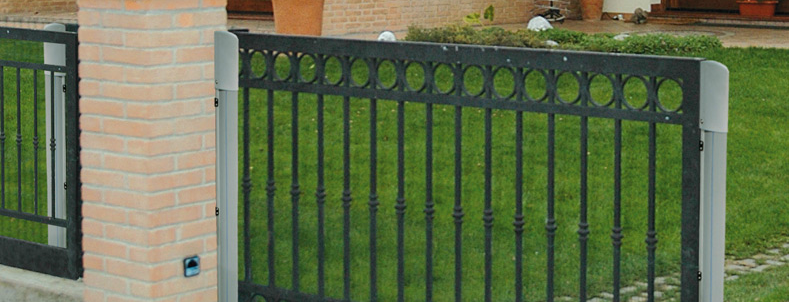-
Your shopping cart is empty!
Menu
Your shopping cart is empty!

Safety edges are used as the last line of defence in gate automation safety. If all other methods have failed and a moving gate hits a person or object, a safety edge at the point of contact should stop the gates and reverse them for three seconds.
The obvious implication here is that other safety methods should be applied to try and prevent anyone, or anything being hit by a moving gate in the first place. But if contact is unavoidable, safety edges will do the same job as a 24V dc system with obstacle detection.
There are two main types of safety edge, mechanical and resistive (sometimes called passive).
Both types of safety edges usually comprise of a length of aluminium channel which is mounted to the surface to be protected. This then holds a length of compressible rubber profile. The type of detection used (mechanical or resistive) passes along the inside of the full length of the rubber profile. Finally, end caps seal either end of the rubber profile and the edge is connected to another edge or a control device with wires or wirelessly.

Mechanical safety edges are supplied in finished, pre-set lengths of 1.5m, 1.7m, 2m and 2.5m. It is possible to cut a mechanical safety edge down to a shorter length, but their construction makes this difficult. If you require different lengths from the standard mechanical safety edge sizes, it’s best to opt for resistive edges.
Mechanical safety edges have a steel cable running inside the length of the rubber profile. This is connected to a relay switch and provides a normally closed output that goes open when activated. They normally stand about 60mm proud of the surface they’re mounted to.
A single mechanical safety edge can be connected directly to a control unit, or multiple edges can be connected in series to a single control unit. If the control unit does not have a suitable DAS (safety edge input), the Nice TCE can be used for control.
Resistive safety edges have an 8.2K Ohm output that goes dead short (closed circuit) when activated. There are two cabling formats for resistive edge - a resistive end and a cable end, or both cable ends.
A single resistive safety edge in operation must have a resistive end and a cable end.
If multiple resistive edges are used together, a safety edge with a resistive end and a cable end is used at the end of the line, and safety edges with both cable ends are linked together.
Resistive edges are connected to a control panel that can monitor an 8.2k Ohm circuit or the Nice TCE. Both types of resistive safety edge can also be connected via:
Faac and Came resistive edges can be supplied in heights ranging from 8mm to 65mm. the most common size for gates is 45mm, while 15mm or self-adhesive 8mm profiles are more frequently used for narrow gaps.
There is a lead time of two to three days for Faac and Came resistive edges that are made to order and are non-returnable as a result. Alternatively, ASO resistive edges are cut to length on site and are supplied with separate end caps to allow configuration during installation.
If you have any questions about specifying or ordering safety edges, please call Linkcare on 01895 232 626.
You can buy Linkcare safety edges and accessories here.
These cookies are required for the website to run and cannot be switched off. Such cookie are only set in response to actions made by you such as language, currency, login session, privacy preferences. You can set your browser to block these cookies but our site may not work then.
These cookies are usually set by our marketing and advertising partners. They may be used by them to build a profile of your interest and later show you relevant ads. If you do not allow these cookies you will not experience targeted ads for your interests.
These cookies allow us to measure visitors traffic and see traffic sources by collecting information in data sets. They also help us understand which products and actions are more popular than others.

Leave a Comment